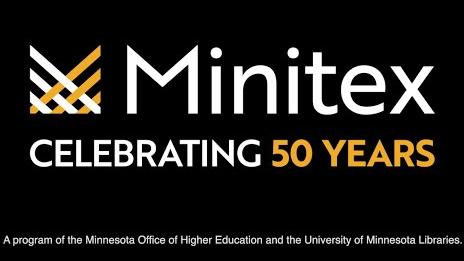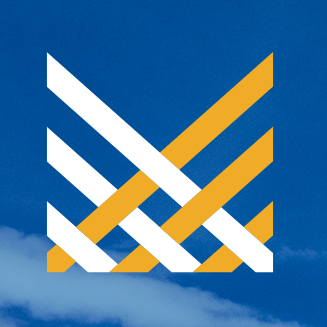by Zach Miller
Quick Summary
Fifty years ago, Minnesota finished an experiment: the Minnesota Interlibrary Teletype Experiment, now known as Minitex. Over the coming year, we’ll invite the entire library community to celebrate our 50th anniversary. We’ll share stories, honor the leaders and organizations we’ve relied upon over the years, and join together to celebrate half a century of collaboration.

Fifty years ago, Minnesota finished an experiment: the Minnesota Interlibrary Teletype Experiment, now known as Minitex. Over the coming year, we’ll invite the entire library community to celebrate our 50th anniversary. We’ll share stories (you can share yours, too), honor the leaders and organizations we’ve relied upon over the years, and join together to celebrate (if but virtually). There may even be a commemorative Minitex pen.
The achievements of the past 50 years haven’t been confined within the walls of our offices, they have taken place in public libraries large and small, in universities and community colleges, in school classrooms, and even on Greyhound buses. Our work is and always has been a collaborative effort with libraries and library staff from across Minnesota and our region.
In 1969, Minnesota’s experiment was the first of its kind. The University of Minnesota Libraries had a world-class collection and, from Caledonia to St. Vincent, Minnesotans (always thirsty for knowledge) needed better access to information. To meet the demand, an extraordinary leader named Alice Wilcox led a collaboration between the University of Minnesota Libraries and 11 libraries from across the state. Together, they used an established technology, teletype, in a new way, to transmit interlibrary loan requests over phone lines for rapid resource sharing between libraries. The experiment was a success and, in 1971, Minitex was funded as a program of the Minnesota Higher Education Coordinating Commission (now the Office of Higher Education) “in cooperation with the state junior college system, the state college system, the University of Minnesota, and the Minnesota private colleges.”
But Minitex has never been just about technology. More fundamentally, we exist to provide the best possible services to Minnesota's libraries and library patrons, using all means available. So, as library needs have grown and shifted over the past half century, our services have grown and changed along with them.
The Minnesota Union List of Serials (MULS) was our first addition, in 1971, followed by the Serials Exchange and Reference programs in 1973. In 1974 we went beyond Minnesota borders and partnered with North Dakota libraries to begin sharing library resources. We started Delivery in 1975, relying on local couriers and, yes, Greyhound buses. In 1975 Minitex established its OCLC Services program to develop a database of monographs for the region to better support resource sharing. South Dakota libraries and Minitex network libraries were first connected in 1978 when a contract was signed with the South Dakota State Library.
In 1989, Cooperative Purchasing began selling 3M tattletape and e-resources to libraries (at discounted prices, of course). We opened the Minnesota Library Access Center's (MLAC) immense subterranean doors in 2000. Five years later, in 2005, Minitex took over management of the MnLink Gateway (now MNLINK). The following year, in 2006, we launched the first portal for the Electronic Library for Minnesota (now eLibrary Minnesota). In 2008, we started our 24/7 reference service, AskMN. In 2014, the Minnesota Digital Library became an official program of Minitex after serving as its administrative home for several years.. That same year, we coordinated a statewide ebooks planning summit that led to the launch in 2016 of Ebooks Minnesota. The following year, in 2017, we inaugurated our newest service, the Minnesota Libraries Publishing Project.
It’s exciting to wonder about what we might do in the next 50 years, but at least one thing is certain: we’ll do it together.


